Design Riding Experiences for Delight
Designing bike facilities means building for skills progression and allowing for SafeFail patterns.
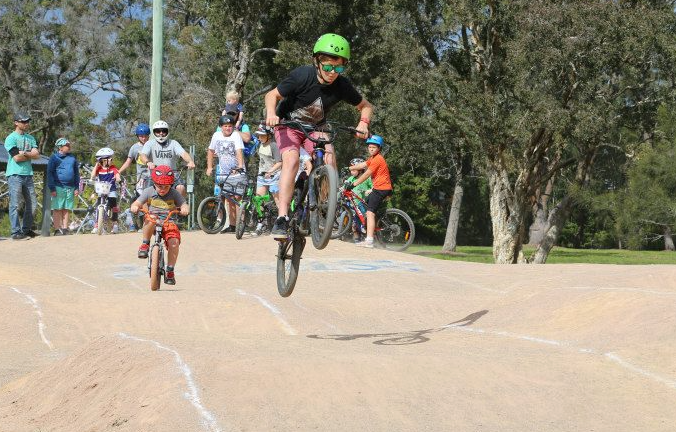
Building Competence + Safe-Fail options
With a varied riding background, we know what it takes to build two wheeled riding competence, as well as some of the downfalls that can arise with increased risk. There are plenty of patches of Australia where I've left some skin as I pushed to tackle a new challenge. There are some things that are fundamental in designing a safe, yet challenging riding experience. Here's our must-haves, with some examples of patterns and anti-patterns that we've seen in different riding facilities.
Competence builds in a progression
As toddlers, we learn to crawl before we walk, walk before we learn to run. Riding skill development is no different. Learning to balance, learning to pedal, learning how to turn without a front wheel washout, or wheelie, or jump. All of these are skills learnt in a competency progression, but all need foundation skills to work from. Having riding facilities that support riders at each stage in their skills progression sequence means attracting a much wider cohort of potential riding families. It's one of the reasons Stromlo Forest Park absolutely nails it in terms of attractiveness as a riding destination, supporting riders of all skill levels with challenges suitable for skill level across a broad range over 50km of designed trails.
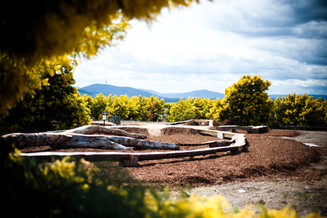
Locally, on Central Coast NSW, we've seen two great examples, but at each end of the challenge spectrum:
Pattern: Saltwater BMX Park, for beginner riders, adjacent to a well designed and popular cycleway, picnic facility and playground, with free WiFi, where families are going to naturally congregate and create memories;
Anti Pattern: San Remo Xtreme Sports Park, where 66% of the available lines are Black runs, viable for maybe 5% of overall riders skills levels to tackle safely. The one Green line for beginner riders is on a downslope, with double jumps and bitumenised jump faces/landing zones, guaranteed to shred exposed skin, faces and risk fractures for new riders.
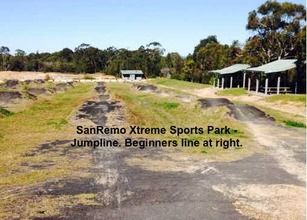
Design for Failure and Safe-Fail vs Fail-Safe
Riders of any skill level and any age are going to make mistakes as they challenge themselves to take on a new skill, whether it be riding a berm, looping out on a wheelie, or jumping high/longer, or more extreme challenges like backflips. Inevitably, that's going to involve some injury risk, so we need to consider how to let kids fail safely, using techniques like: motile track surfaces (gravel vs hard/immobile bitumen); differential heights (set landing zones higher than take off in jump-ups), gap-handling (using a table-top style double jump to handle landing short, instead of a jump face that will cause a trip over the bars when landing short); realistic and achievable gradings (make sure Green is beginner friendly).
Patterns and Anti-Patterns
Here's a simple Compare+Contrast experience. Imagine you're a junior rider, off training wheels, with established balance and pedalling strength, looking to tackle new obstacles.
Would you rather:
a) Learn on a gravel track, with manageable slopes and perhaps a bit of gravel rash (Exhibit A) or;
b) Learn on a downhill slope track, with bitumenised jump faces and landing ramps where you're going to lose a lot more skin when you make a mistake (Exhibit B)?
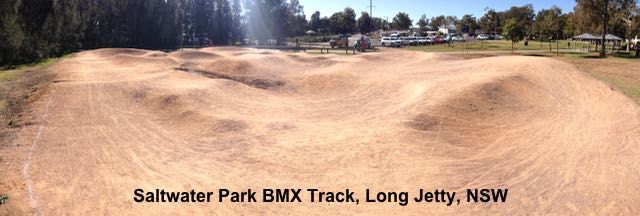
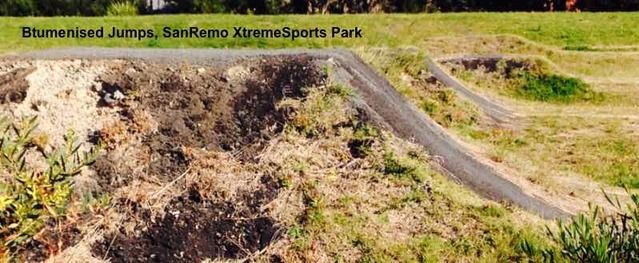
Design for Delight
Designing a Bike Park is the sort of thing that's best tackled by using a Service Design driven approach to create experiences that evoke joy, rather than drive people away with a bad experience.
Design for Delight.
Create Joy.
Support SafeFail.

